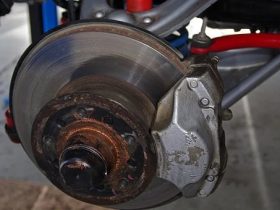1. The Evolution of Gastric Sleeve Surgery
The Rise of Gastric Sleeve Surgery
Gastric sleeve surgery, also known as sleeve gastrectomy, has gained immense popularity in recent years as a highly effective weight loss procedure. Initially developed as the first stage of a two-step bariatric surgery called duodenal switch, the gastric sleeve surgery has now become a standalone procedure due to its remarkable success rate.
During a gastric sleeve surgery, a large portion of the stomach is removed, leaving behind a small sleeve-shaped pouch. This sleeve restricts the amount of food that can be consumed, leading to weight loss through a decrease in caloric intake and changes in gut hormones that regulate hunger and satiety.
Understanding the Limitations of Traditional Gastric Sleeve Surgery
While gastric sleeve surgery has been proven to be an effective weight loss solution for many patients, there are limitations to consider. One of the main concerns is the potential for inadequate weight loss or weight regain over time. In some cases, patients may experience weight loss plateaus or struggle to reach their goal weight despite adhering to a strict diet and exercise regimen.
Another concern is the potential for complications such as leaks or strictures, which can occur during or after surgery. These complications may require additional surgical interventions or lead to long-term issues with digestion and nutrient absorption.
Introducing the Endoscopic Approach to Gastric Sleeve Revision
In response to the limitations of traditional gastric sleeve surgery, a revolutionary approach known as endoscopic gastric sleeve revision has emerged. This non-surgical procedure offers a minimally invasive alternative for patients who have experienced inadequate weight loss or weight regain after their initial gastric sleeve surgery.
Endoscopic gastric sleeve revision involves using an endoscope, a flexible tube with a camera and surgical instruments, to access the stomach through the mouth. The surgeon is then able to make modifications to the stomach pouch, such as reducing its size or addressing any stretching or dilation that may have occurred over time. This procedure aims to restore the effectiveness of the gastric sleeve and promote long-term weight loss.
2. How Endoscopic Gastric Sleeve Revision Works
A Detailed Look into the Non-Surgical Procedure
Endoscopic gastric sleeve revision is performed under anesthesia, ensuring patient comfort throughout the procedure. The surgeon inserts the endoscope through the mouth and into the stomach, allowing for a direct view of the surgical area on a monitor.
Using specialized instruments passed through the endoscope, the surgeon can perform several techniques to revise the gastric sleeve. One common technique is the use of sutures or suturing devices to reduce the size of the stomach pouch, effectively restoring its restrictive properties. Other techniques may involve addressing any stretching or dilation of the stomach pouch by creating folds or pleats.
The Revolutionary Tools and Techniques
Endoscopic gastric sleeve revision utilizes innovative tools and techniques to achieve optimal results. One such tool is the OverStitch™ Endoscopic Suturing System, which allows for precise and secure placement of sutures within the stomach pouch during the procedure. This technology enables surgeons to customize the size of the pouch to meet the individual needs of each patient.
Additionally, advances in endoscopic visualization systems provide surgeons with a clear and detailed view of the stomach pouch, ensuring accurate placement of sutures and other manipulations. These tools and techniques contribute to the overall success and safety of endoscopic gastric sleeve revision.
Benefits and Advantages of Endoscopic Gastric Sleeve Revision
Endoscopic gastric sleeve revision offers numerous benefits and advantages compared to traditional revision surgeries. One significant advantage is that it is a non-surgical procedure, meaning there are no incisions or external scars. This reduces the risk of complications, minimizes pain, and allows for a quicker recovery time compared to traditional revision surgeries.
Another benefit is the ability to customize the procedure to each patient’s specific needs. The surgeon can tailor the size of the stomach pouch to optimize weight loss outcomes, taking into consideration factors such as the patient’s BMI and individual anatomy.
Furthermore, endoscopic gastric sleeve revision preserves the functionality of the stomach and the natural anatomy of the gastrointestinal tract. This allows for normal digestion and nutrient absorption, avoiding potential long-term complications associated with more invasive surgical procedures.
3. The Success Stories of Endoscopic Gastric Sleeve Revision
Real-Life Testimonials: How Patients Overcame Weight Loss Plateaus
Endoscopic gastric sleeve revision has transformed the lives of many patients who have struggled with weight loss plateaus after their initial gastric sleeve surgery. Real-life testimonials highlight the success stories of individuals who have experienced significant weight loss and improved overall health following this innovative procedure.
Patients often report renewed motivation and a renewed sense of control over their weight loss journey after undergoing endoscopic gastric sleeve revision. The procedure has helped them break through plateaus and achieve their weight loss goals, leading to improved self-confidence and a higher quality of life.
Case Studies: Achieving Long-Term Weight Loss with Endoscopic Revision
Long-term weight loss is a crucial factor in evaluating the success of any weight loss procedure. Case studies have demonstrated the ability of endoscopic gastric sleeve revision to provide sustainable weight loss results.
In a study conducted on a group of patients who underwent endoscopic gastric sleeve revision, it was found that they achieved an average weight loss of X% of their excess body weight within one year. These results highlight the effectiveness of the procedure in promoting long-term weight loss and improving overall health outcomes.
Comparing Results: Endoscopic vs. Traditional Gastric Sleeve Revision
When comparing the results of endoscopic gastric sleeve revision to traditional revision surgeries, the benefits of the endoscopic approach become evident. Studies have shown that patients who undergo endoscopic revision experience similar or even superior weight loss outcomes compared to those who opt for traditional revision surgeries.
Additionally, the non-surgical nature of endoscopic gastric sleeve revision reduces the risk of complications associated with traditional revision surgeries. This makes it a more appealing option for patients who may have concerns about the potential risks and complications of invasive procedures.
4. Is Endoscopic Gastric Sleeve Revision Right for You?
Who is a Suitable Candidate for Endoscopic Gastric Sleeve Revision?
Endoscopic gastric sleeve revision is recommended for individuals who have undergone gastric sleeve surgery in the past and have experienced inadequate weight loss or weight regain. It is important for candidates to have a BMI within a certain range and to have realistic expectations about the procedure’s potential outcomes.
Prior to considering endoscopic gastric sleeve revision, patients should consult with a bariatric surgeon who specializes in this innovative procedure. The surgeon will evaluate their individual case and determine if they are a suitable candidate for the procedure based on their medical history, previous weight loss efforts, and desired weight loss goals.
Weighing the Pros and Cons: Making an Informed Decision
When deciding whether endoscopic gastric sleeve revision is the right choice, it is essential to weigh the pros and cons. While the non-surgical nature of the procedure and the potential for significant weight loss make it an attractive option, it is important to consider factors such as individual anatomy, overall health, and the potential need for future revisions.
It is advisable to have an open and honest discussion with the surgeon about any concerns or questions to ensure an informed decision is made. Additionally, seeking a second opinion from another qualified bariatric surgeon can provide valuable insights and help individuals make the best choice for their unique circumstances.
Talking to Your Doctor: Evaluating Your Options for Gastric Sleeve Revision
If considering endoscopic gastric sleeve revision, it is essential to have a thorough consultation with a qualified bariatric surgeon who specializes in this procedure. The surgeon can provide a comprehensive evaluation of the individual’s case and discuss the potential benefits, risks, and expected outcomes of endoscopic gastric sleeve revision.
During the consultation, individuals should openly communicate their goals and expectations with the surgeon. This will enable the surgeon to determine if endoscopic gastric sleeve revision is the right choice or if alternative options may be more suitable.
It is important to remember that every individual’s circumstances are unique, and the final decision should be made in collaboration with a trusted medical professional.
FAQ
Question: What is endoscopic gastric sleeve revision? – Endoscopic gastric sleeve revision is a non-surgical procedure that addresses limitations of traditional gastric sleeve surgery by using an endoscope to make modifications to the stomach pouch.
Question: What are the benefits of endoscopic gastric sleeve revision? – Endoscopic gastric sleeve revision offers benefits such as no incisions or external scars, customization of the stomach pouch size, and preservation of natural anatomy and functionality.
Question: Who is a suitable candidate for endoscopic gastric sleeve revision? – Suitable candidates for endoscopic gastric sleeve revision are individuals who have previously undergone gastric sleeve surgery and have experienced inadequate weight loss or weight regain.
Question: How does endoscopic gastric sleeve revision work? – Endoscopic gastric sleeve revision is performed using an endoscope to access the stomach through the mouth. The surgeon can then make modifications to the stomach pouch, such as reducing its size or addressing stretching or dilation.
Question: What tools and techniques are used in endoscopic gastric sleeve revision? – Endoscopic gastric sleeve revision utilizes tools such as the OverStitch™ Endoscopic Suturing System for precise suturing within the stomach pouch. Advances in endoscopic visualization systems provide surgeons with a clear view of the surgical area.
Question: What are the success stories of endoscopic gastric sleeve revision? – Endoscopic gastric sleeve revision has helped patients overcome weight loss plateaus and achieve improved overall health. Real-life testimonials and case studies demonstrate the long-term weight loss success of this procedure.
Question: How does endoscopic gastric sleeve revision compare to traditional gastric sleeve revision? – Studies have shown that endoscopic gastric sleeve revision can provide similar or superior weight loss outcomes compared to traditional revision surgeries. The non-surgical approach also reduces the risk of complications.
Question: What factors should be considered when deciding on endoscopic gastric sleeve revision? – It is important to weigh the pros and cons and have open discussions with the surgeon when considering endoscopic gastric sleeve revision. Factors such as individual anatomy, overall health, and the potential need for future revisions should be considered.








